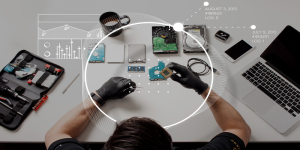Understanding Digital Forensics Labs: Their Importance, Functionality, and Benefits 
In the ever-evolving landscape of cybersecurity, the need for specialized environments to handle digital evidence is more critical than ever. Digital forensics labs are at the heart of this process, providing the necessary infrastructure to uncover, analyze, and preserve digital evidence. But what exactly is a digital forensics lab, and why is it essential? In this blog, we’ll explore the key aspects of digital forensics labs, including their functionality, benefits, and how to get started with one.
What Is a Digital Forensics Lab?
A digital forensics lab is a specialized facility designed to conduct forensic investigations on digital devices and data. These labs are equipped with advanced tools and technologies that enable forensic experts to extract, analyze, and preserve digital evidence. Whether it’s a corporate environment, law enforcement agency, or a cybersecurity firm, a digital forensics lab serves as a controlled environment where sensitive data can be handled securely and systematically.
The Necessity of a Digital Forensics Lab
The importance of a digital forensics lab cannot be overstated, especially in an era where cybercrime is on the rise. Here are some reasons why these labs are indispensable:
- Preservation of Evidence: Digital evidence is fragile and can be easily altered or destroyed. A forensics lab ensures that data is preserved in its original state, maintaining its integrity for legal proceedings.
- Compliance with Legal Standards: Digital forensics labs operate under strict legal guidelines to ensure that evidence is admissible in court. This adherence to legal standards is crucial for the successful prosecution of cybercrimes.
- Efficient Investigation: With the right tools and expertise, digital forensics labs can conduct investigations more efficiently, reducing the time it takes to uncover critical information.
- Handling Complex Cases: Cyber incidents often involve large volumes of data and complex networks. A digital forensics lab is equipped to handle these challenges, providing a structured approach to investigation.
How Does a Digital Forensics Lab Function?
Digital forensics labs operate through a series of systematic steps designed to ensure the thorough examination and preservation of digital evidence. Here’s a general overview of how these labs function:
- Case Intake: The process begins with the intake of the case, where digital devices or data are submitted for analysis. This could include computers, mobile devices, storage media, and network data.
- Imaging: The next step is to create a bit-by-bit copy, or image, of the data from the original device. This ensures that the original data remains unaltered during the investigation.
- Analysis: Forensic experts then use specialized software to analyze the imaged data. This can involve recovering deleted files, analyzing logs, detecting malware, and tracing the origins of a cyberattack.
- Reporting: After the analysis is complete, the findings are compiled into a detailed report. This report outlines the evidence discovered, the methods used in the investigation, and any conclusions drawn.
- Presentation: In cases where legal action is pursued, forensic experts may present their findings in court. This step involves explaining the technical details in a way that is understandable to non-technical stakeholders, including judges and juries.
- Secure Storage: Throughout the investigation, all data and evidence are stored securely, with access limited to authorized personnel only. This ensures the integrity of the evidence throughout the entire process.
What Do You Benefit from a Digital Forensics Lab?
The benefits of having access to a digital forensics lab are substantial, particularly for organizations that deal with sensitive information or are at risk of cyberattacks:
- Increased Security: By identifying vulnerabilities and understanding how a breach occurred, organizations can strengthen their defenses against future attacks.
- Legal Compliance: A digital forensics lab ensures that investigations are conducted in compliance with legal standards, which is crucial for any potential litigation.
- Data Recovery: In the event of data loss due to a cyber incident, a forensics lab can often recover critical information, minimizing the impact on the organization.
- Peace of Mind: Knowing that there is a dedicated facility equipped to handle digital evidence provides peace of mind, especially in the face of a cyber crisis.
When Do You Need a Digital Forensics Lab?
A digital forensics lab is necessary in various scenarios, including but not limited to:
- Cybersecurity Breaches: When a cyberattack occurs, a digital forensics lab is essential for investigating the breach and identifying the perpetrators.
- Legal Investigations: In cases involving digital evidence, such as fraud, intellectual property theft, or data breaches, a forensics lab is crucial for gathering admissible evidence.
- Data Recovery: If critical data is lost or corrupted, a forensics lab can help recover the information and determine how the loss occurred.
- Internal Investigations: Organizations may also need a forensics lab for internal investigations, such as when there is suspected employee misconduct involving digital assets.
How to Get Started with a Digital Forensics Lab 
Setting up a digital forensics lab requires careful planning and investment. Here are some steps to get started:
- Assess Your Needs: Determine the scope of the lab based on the types of cases you expect to handle and the volume of data you will process.
- Invest in Tools and Technology: Equip the lab with the necessary hardware and software for data imaging, analysis, and secure storage. This may include forensic workstations, data recovery tools, and specialized software for analyzing digital evidence.
- Hire Skilled Professionals: A digital forensics lab requires a team of skilled forensic analysts with expertise in various areas of cybersecurity and digital investigations.
- Establish Protocols: Develop standard operating procedures (SOPs) for handling cases, preserving evidence, and maintaining chain of custody. These protocols should align with legal standards to ensure the admissibility of evidence.
- Secure the Facility: Ensure that the lab is physically and digitally secure, with restricted access to sensitive data and evidence. This includes implementing cybersecurity measures to protect the lab’s digital infrastructure.
- Ongoing Training: Cybersecurity and digital forensics are constantly evolving fields. Regular training for your team is essential to keep up with the latest tools, techniques, and legal requirements.
Conclusion:
A digital forensics lab is a vital asset in the fight against cybercrime. By providing a controlled environment for the analysis and preservation of digital evidence, these labs play a crucial role in ensuring that justice is served and that organizations can recover from cyber incidents. Whether you’re considering setting up your own lab or simply understanding its importance, the role of a digital forensics lab in today’s digital world cannot be underestimated.
For more information and PoC, you can Contact Us.









